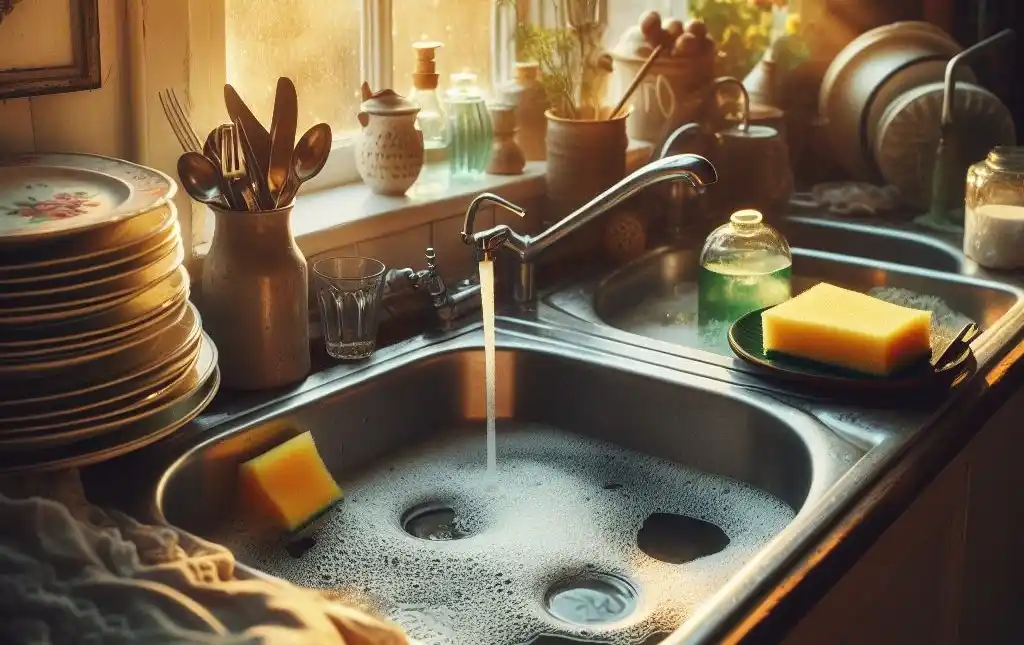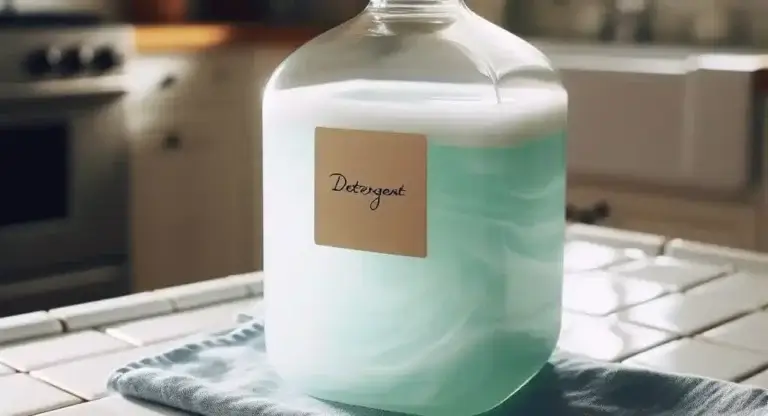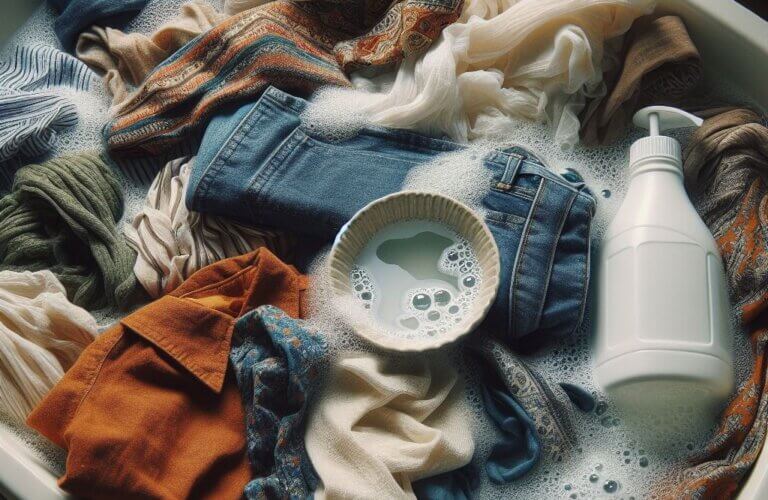10 Steps in Washing Dishes: The Ultimate Guide to Washing Dishes by Hand
Washing dishes by hand might seem like a mundane chore, but it’s an essential kitchen skill that everyone should know. With the right technique and tools, you can get your dishes sparkling clean in no time!
In this comprehensive guide, we will walk you through the entire process 10 steps in washing dishes step-by-step. From filling up the sink and scraping off excess food to rinsing and drying, we’ve got you covered with expert tips and tricks for properly cleaning ceramic, stainless steel, cast iron, silverware, glassware, and more.
Plus, we’ll share our top secrets for avoiding common mistakes that lead to greasy residue or spotty dishes. With these easy 10 steps, you’ll have beautifully clean dishes every time without the need for a dishwasher!
Table of Contents
Why You Should Learn Proper Dish Washing Technique
Before we get started, let’s go over some key reasons why handwashing dishes is an invaluable skill:
- It saves money: Using your hands instead of an appliance cuts back on water and electricity bills. Washing small loads by hand is also more eco-friendly.
- Some items can’t go in the dishwasher: Many pots, pans, cast iron, specialty glassware, antiques, etc need more delicate washing by hand.
- It gives you more control: Handwashing allows you to inspect dishes for leftover grease and food debris that might not get washed off in the dishwasher. You can spot-treat any dirty cookware prior to filling the washing machine.
- You’ll have fewer damaged items: Improperly loaded dishwashers can chip, crack, dull, and warp dishes. Handwashing is gentler on delicate glassware and vintage pieces.
Now that you know why handwashing dishes is such an indispensable skill, let’s get into the methodology and best practices step-by-step!
Step 1: Fill Up the Sink Basin With Hot Water
The first step is simple – plug the drain and fill up your sink about halfway with hot water. The hotter the better! Heat helps dissolve grease and food remnants from dishes more effectively than lukewarm or cold water. Here are some tips on the best way to wash dishes:
- If you have a double basin sink, fill up only one side to wash and leave the other empty to rinse.
- If you only have a single basin, divide your sink into wash and rinse sections with drain covers.
- Temperatures between 120-140°F work best. Take caution not to burn your hands!
- Consider wearing rubber gloves to keep your hands safe and prevent drying and cracking.
Step 2: Add A Drop Of Dish Soap
Once your sink is filled with piping hot water, add a small amount of dish detergent – about a drop or two is plenty. Our top picks for best way to wash dishes:
- Dawn Ultra: The best grease-cutting power at low cost
- Mrs. Meyer’s Basil: Lovely natural scents from plant-derived cleaners
- Seventh Generation Free & Clear: Unscented and hypoallergenic
- Dr. Bronner’s Sal Suds: Made from biodegradable plant-based ingredients
Start with just a drop or two first rather than going overboard. It doesn’t take much to make good suds with hot water! Swirl the water gently to incorporate the soap without creating too many bubbles. Too many suds actually make it harder to see and clean greasy dishes effectively.
Step 3: Scrape and Rinse Dishes Before Washing
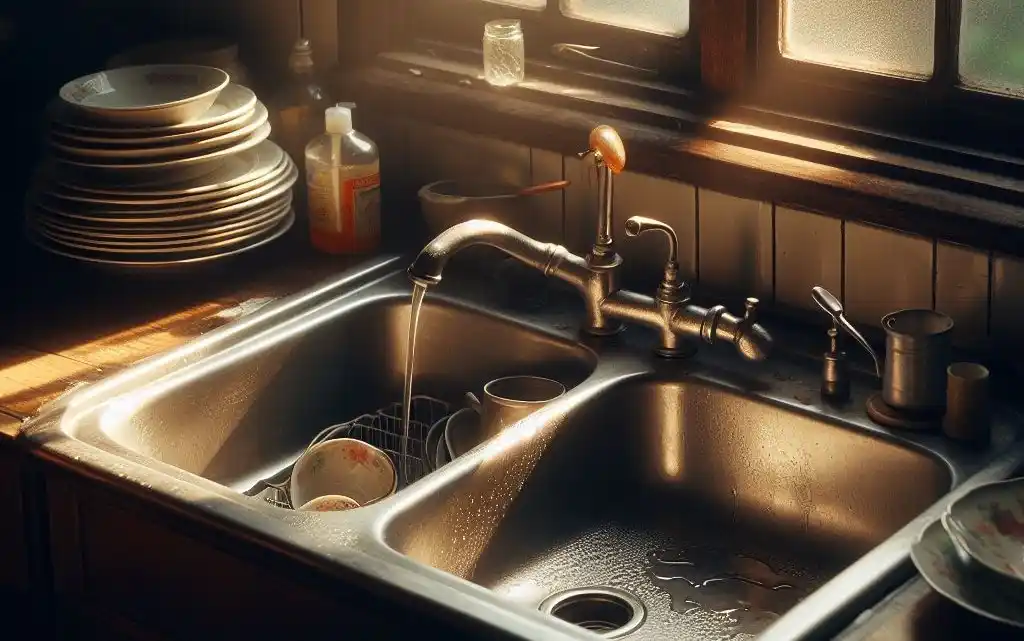
Now it’s time to clean – but don’t put dirty dishes straight into the soapy water before pre-rinsing first! This step eliminates most of the gunk, allowing your sudsy sink bath to work most effectively.
Here is the proper order of operations:
- Scrape off chunks: Food scraps like bones, shells, cores, and bits should be scraped off into the garbage. Use a spatula, spoon, or brush.
- Rinse under hot water: Give plates, silverware, pots etc a thorough rinse under running water to remove leftover sauces, grease, and debris.
- Soak extra-dirty cookware: Pans with burned-on food may need to soak for 15-30 minutes in hot, soapy water before scrubbing.
Skipping this pre-wash step puts all that gross dirt straight into your wash water, getting suds and dishes dirty much faster. Yuck!
Step 4: Wash Dishes in Soapy Hot Water
Now you’re ready to start hand washing! Place your pre-rinsed dishes into the hot, soapy sink water you prepared. Use these tips for optimal cleaning:
- Prioritize delicate glassware first. The heat helps, but prolonged soaking can etch fancy wine glasses. Get them clean and into the rinse sink first.
- Use a soft dishcloth, sponge, or brush. Gently scrub all surfaces, especially crevices and etched decorations where food hides.
- Let grime coated cookware fill with hot water and soak briefly. If pans or casserole dishes need more attention, let them sit 1-2 minutes so grease and burnt bits separate. Then scrub!
- Replenish hot water and soap in your washing machine as needed when washing the dishes. Drain dirty wash water and rinse debris every few loads. Re-fill with hot water and a drop of soap when suds diminish.
Repeat the scrubbing process until all visible food and grease has been removed from every dish surface. Check crevices, patterns, and carvings for hidden gunk too. Now they’re ready for rinsing!
Step 5: Rinse Dishes Thoroughly
Once washing is complete, dishes need to be thoroughly rinsed before drying. Why? Residual grease, soap scum, and microscopic food all get left behind if you don’t rinse properly after hand washing.
Here is the right way to rinse:
- Place dishes into the empty section of a divided double basin sink. If you only have one sink, drain the soapy wash water completely before rinsing.
- Rinse dishes under very hot, running water. This heat helps dissolve any remaining grease or soap.
- Pay special attention to engraved patterns and crevices by running extra hot water over those areas.
- For extra shiny silverware and glassware, do a cold water finish and rinse right at the end before drying.
Repeat rinses until the sink stays completely clear while rinsing and water sheets off smoothly. No more hidden bubbles or debris! Now let’s talk about drying…
Step 6: Allow Dishes to Air Dry
Drying is one of the most important finishing steps to prevent water spots and film. Towel drying almost always leaves some streakiness behind. Instead, we recommend air drying everything:
- Place dishes upside down in dish drying racks. This allows water to run off so surfaces stay polished.
- If possible, look for rack designs with sloped, rippled bottoms to elevate dishes. This improves run-off.
- Set racks over a towel, mat, or drying board to collect excess water. Some fold-up accordion-style for compact storage!
- Avoid overcrowding dishes too closely together. Air needs to circulate everywhere.
- Let dishes air dry completely before putting them away, at least several hours. Be patient – it works!
We promise if you take the extra time to air dry properly AFTER rinsing well, you’ll have beautiful, sparkling clean dishes every time. No dishwasher is needed!
Step 7: Prioritize Dishwashing Order from Least to Most Dirty
Now that you know the basic wash-rinse-dry method, let’s talk about best practices for order of operations…
In cleaning 101, learn that you should always progress from cleaning the least grime-strewn dishes to the filthiest while washing everything.
Here is the ideal order to tackle your dishes:
- Glassware and stemware: Fine crystal, fancy wine glasses, champagne flutes. Delicate and require gentle care.
- Silverware and utensils: Forks, spoons, knives. After washing in the washing machine, stainless steel cutlery comes out sparkling clean.
- Ceramic plates and bowls: With glossy glaze finishes. Food particles lift off smooth surfaces.
- Stoneware, metal, and silicone: Textured bakeware or mixing bowls, sheet pans, muffin tins are serving dishes that may need careful cleaning.
- Wood and plastic: Cutting boards, salad tossers, spatulas, silicone utensils. Avoid prolonged soaking when you wash your dishes.
- Cookware: Cast iron skillets and enameled pots. Certain serving dishes may need special seasoning maintenance. Check manufacturer guidance!
Follow this sequence for optimal results, finishing with the dirtiest cookware last. Doing it backwards clouds your wash water too fast!
Step 8: Handle Extra-Delicate Items with Care
We covered the basic dishes, flatware, pots, and pans…but what about the super delicate stuff like fine china and crystal?
Here are our top specialty care tips:
- Antique china: Check manufacturer guidance first. Many vintage dishes can only handle hand washing! Use minimal, cooler-temperature water.
- Crystal stemware: Skip the hot water soak! Rinse gently. Some metals adorning glassware can corrode or fade.
- Gold-trimmed dishware: Avoid harsh dish soaps. Use mild baby shampoo instead of soft cloth. Dry instantly with a soft towel.
- Cast iron: Requires special re-seasoning after washing. Rub with a small amount of vegetable oil before storing.
- Non-stick bakeware: Use soft-bristle brush and plastic scrubbers only! No green or metal pads.
- Enamelware: Check manufacturer guidance on soak times. Metal trim may require special care.
Treat your most delicate and expensive items gently. Handwashing allows you full control over specifics like water temperature and scrubbing pressure.
Step 9: Brighten and Deodorize with Special Additives
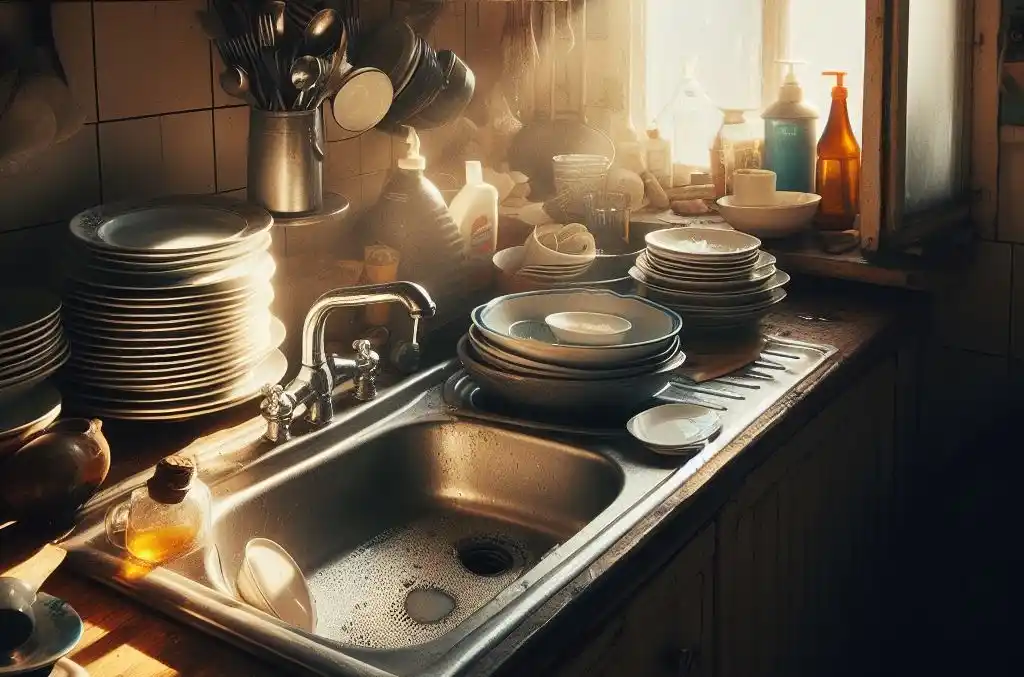
For extra cleaning boosts, or to naturally combat grease and funky dish smells, try these handy additives:
- Baking Soda: A magic ingredient in getting a clean towel and a clean everything when you wash your dishes. Delightfully gentle abrasive to break down stains without scratching. Also deodorizes!
- White Vinegar: Cuts extra grease, and removes hard water stains & streaks. Skip with acid-sensitive stones like marble.
- Lemon Juice: Natural acid removes tarnishes and disinfects. Skip with acid-sensitive materials. Rinse well!
- Essential Oils: Add nice scents naturally. Tea tree, lavender, and citrus oils have antimicrobial properties too.
- Salt: Light abrasive for scrubbing. Mix with baking soda and a drop of castile soap for an effective homemade paste.
Sprinkle, squeeze, or mix additives into your hot wash water as desired when you’re washing the dishes. We recommend starting with small amounts first before going overboard.
Step 10: Leave No Mess Behind!
The last step is just as important – completely tidy up! Don’t leave dishes strewn about, or damp towels and sponges sitting in sinks. Finish strong with these tasks:
- Rinse out the wash basin. Use hot water and a drop of soap. Avoid gunk sticking to the bottom.
- Clean countertops and backsplashes. Wipe away drips or splashes around cooking and cleanup areas.
- Hang dishcloths and sponges to dry. Bacteria multiply like crazy on damp cleaning tools. Opt for a two-sponge system so one can dry out completely between uses.
- Take out trash. Dispose of scraps and crumbs so they don’t attract bugs or pets overnight.
- Store all dishware properly. Put everything completely dry in the cupboards neatly. Air dry glassware upside down.
Leave your kitchen cleaner than when you started, and you’ll feel even more satisfied!
Now you know all our top secrets for hand-washing dishes like a pro. Follow these simple steps and tricks for sparkling clean dishes every time – no dishwasher required!
What tips do YOU have for getting dishes extra clean and shiny by hand? Share your best wisdom in the comments…we may add your ideas to our ultimate guide!
Summary of the 10 Steps in Washing Dishes
- Fill one sink basin halfway with hot water, or divide the double sink into wash and rinse sections
- Add just a drop or two of eco-friendly dish soap
- Always pre-scrape and pre-rinse dishes first before washing
- Scrub all surfaces with cloth, sponge, or brush in hot sudsy water
- Rinse all soap residue off thoroughly with hot water
- Let dishes air dry completely upside down before putting them away
- Wash from the least dirty delicate items to most dirtiest cookware
- Handle fine china and crystal gently; check specialty care tips
- Boost dishwashing by using baking soda, vinegar, lemon juice, or essential oils to wash your dishes.
- Leave no mess behind! Dispose of garbage, dry cleaning tools, and put dishes away neatly
FAQs: 10 Steps in Washing Dishes
How do I get baked-on food and grease stains out of pots and pans when hand washing?
For stubborn cooked-on messes, let pots and pans soak for 15-30 minutes in hot, soapy water before scrubbing. Use a soft sponge on non-stick; plastic scrub brush handles are gentle. Bar Keepers Friend or Bon Ami powders help lift stains without scratching. Avoid abrasive green/metal scrubbers.
What is the best way to wash greasy, oily dishes by hand?
Hotter water is better for breaking down grease – fill sinks with 120-140°F water. Add just a drop or two of the best grease-fighting dish soap like Dawn Ultra. Let plates with oily residue soak 1-2 minutes before scrubbing clean with soft dishcloth or sponge. Avoid flooding the sink with lots of bubbles that can redeposit grease. Rinse extremely thoroughly after washing.
How do you hand wash delicate crystal and antique china?
Check manufacturer guidance for specifics first. Many fine china pieces must be hand-washed only to prevent chipping, dulling, and decoration loss from harsh dishwasher chemicals. Use room temperature water rather than risk thermal shock cracking delicate crystal glasses. Skip the long hot soak and scrub extremely gently with a soft cloth. Rinse gently and dry instantly with a soft towel.
Why do my hand-washed dishes still feel greasy afterward?
Greasy post-wash residue means you need to improve rinsing! Food oils and soap scum cling when not rinsed properly. After washing plates, pots, etc, rinse under very hot, flowing water while scrubbing lightly with a soft cloth. Check crevices for bubbles. Rinse until the water sheets off the dishes without sticking, ensuring your dishes are clean. Also, avoid overcrowding serving dishes in the drying rack; air circulation is key to ensure your dishes are clean.
I hope this comprehensive guide gives you total confidence in washing dishes by hand quickly and effectively! Let us know if you have any other questions.

